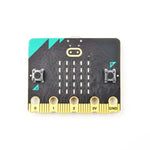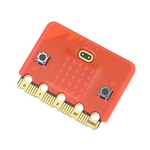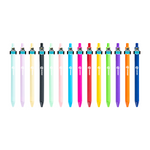The Arcade controller is a popular collective input set device and the typical type consists of a joystick and numerous push buttons. MakeCode Arcade is a recent proposal raised by Microsoft, it has positioned itself as one of the best educational environments for creative programming, mainly to create video games.
With the support of the Microsoft, they’ve created the Arcade MicroSoft which is an open-source platform that collects the games and artworks all over the world. There are several parts directing with your different demands such as the first option which is to create your games, the second is the skill maps, the third is the specific tutorials that collects different fun and interesting projects, the forth is the in-time programming, the fifth is the blocks programming games, in this chapter you may find many classical games in our childhood time, also there are the JavaScript games available. Obviously a comprehensive support is given from them and you may explore more in the platform by yourselves.
It is able to run games created with MakeCode Arcade that are not a computer. There are some Arcade devices available in the educational market available for students and teachers to operate, in this sharing I am going to introduce several Arcade devices here.

The RETRO Arcade is an arcade device in a big screen with a high resolution, by far it is the first arcade device in this resolution and the screen size is the biggest in the market and I believe this is the most notable thing when we compare to its competitors which only support 160*128p only.
Let’s recall the basic information with the details below:
-
Screen: 320×240 2.4″”
-
Power: 560mAh build-in rechargeable battery and 5V charging USB.
-
Sensors/actuators: 6 programmable buttons, buzzer, light sensor, accelerometer, vibrator, Jacdac compatibility.
-
Extras: Compatible for LEGO pieces
-
Indicators: Light indicators for low battery, sufficient battery and charging.
-
Price: 59.9$ USD
Outlook:
It surprises me the first time when I take it out of the box since it is in a fully ABS shelled outlook and it has a smooth handling feels with a compact design.
On the back side, it has four Lego blocks compatible connections, you may do some simple assembly to complete a decoration if you have something in hand. Also I have to mention the dented design on the back gives a good holding feels while playing it.
Buttons:
It has a directional cross key on the left side, obviously we can use it to control the up, forward, reversing and the down motions with it. On the right side there are two programmable A, B buttons, through which you can program the functions in the platform. Also in the middle there are buttons for menu and reset. And the power button is placed on the top.
While playing it, the light intensity is beautiful to display and the resolution gives a good experience on the gaming. But the buttons and keys seems a little bit loose.
2. Meowbit from Kittenbot

The Meowbit is a card-sized graphical retro game computer that allows you to code in MakeCode Arcade and Python. It consists of a 1.8' full-color screen, 6 programmable buttons, a buzzer, a built-in light sensor,a temperature sensor, SD card slot and an edge connector.
Well let’s may have a look on the specific information to it with the information below:
-
Dimensions: 52x76x12mm Weight: 42g
-
Power Input: 5V USB, 3.7~4.2V Battery Box
-
Resolution: 160x128
-
Screen Size: 1.8 inches
-
Price: 45.9$ USD
Outlook:
Actually, it is in a bare PCB design and is enclosed with a silicone protection case, they provide several cases in different colors. From the top side there are connections for the SD card, the USB power interface and the earphone port in 3.5mm. At the bottom side, it has a very micro:bit type edge connector, this means you can have it connected with some breakout boards and devices that are compatible to the micro:bit too.
The package is sent with a standalone lithium battery pack which allows you to power it.
Buttons:
It has six separate buttons with the directional functions and also the A,B buttons.
Display:
When power it on, the light intensity looks a little dark but the overall is good and the speaker sound is a little hard to hear.
The tiny design looks durable for classroom students to operate in 1-2 years.
3. Gamego from Tinkergen

GameGo is a programmable game console that supports game programming on MakeCode Arcade and your retro arcade game ideas.
Let’s have a look on the basic information about it:
-
Display: 8″ TFT Color display, 160*128
-
Power supply: Built-in Li-ion Battery or 5V Micro USB
-
Battery: Rechargeable Litium battery 400mAh
-
Dimensions: 82 x 58 x 21 mm
-
Price: 51.5$ USD
Outlook:
It has the same layout with the Meowbit and it gets a integrated lithium battery inside, and it is the same with the power button, the earphone connections on the top.
Buttons:
It has eight separate buttons with the directional functions and also the A,B buttons.
While playing it, the speaker sound is fabulous loud.
But the noises of the buttons are quite loud.
4. Arcade from Kitronic

The Kitronic arcade is a handled gamepad for use with the MicroSoft MakeCode editor.
Still, let’s have a look at the basic information about it:
-
Dimensions: 155*60*28.3mm
-
Display: Full color LCD
-
Power: 3* AA battery or USB cable
Outlook:
This one looks quite different than the others but still similar small sizes as Meowbit and GameGo, it is still in the bare PCB type but is covered with an acrylic case. On the back side, it powered by three AA dry batteries. Also still the same layout of 4 directional keys on the left and A,B on the right. The interesting things are that there are rows of connections on the right side and also with the vibration sensor and the buzzer. The buttons are quite clicky and in standard button sizes and this gonna not be comfortable if in long terms operation.
Conclusions:
The above 4 Arcade devices are the regular devices we can see in the markets. Each has their advantages and shortcomings. The recommended one would be the Retro arcade as it really has a beautiful experiences on the gaming with a wide view and high resolution, the characteristics there are beautiful and smooth to work on, besides, they have references projects in Wikis that are also in opensource for students and teachers to take as references.













